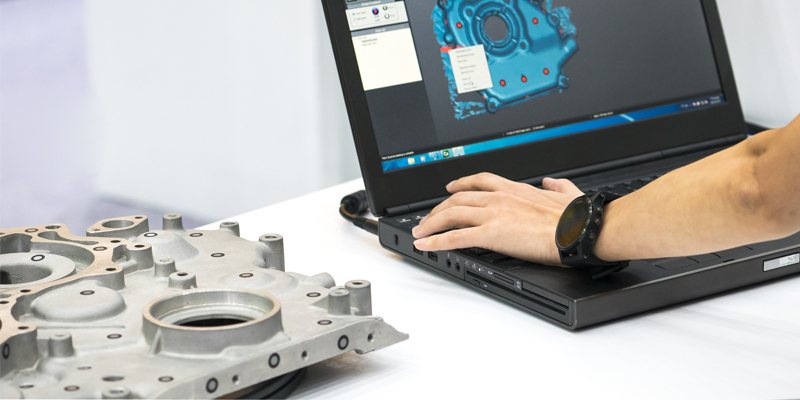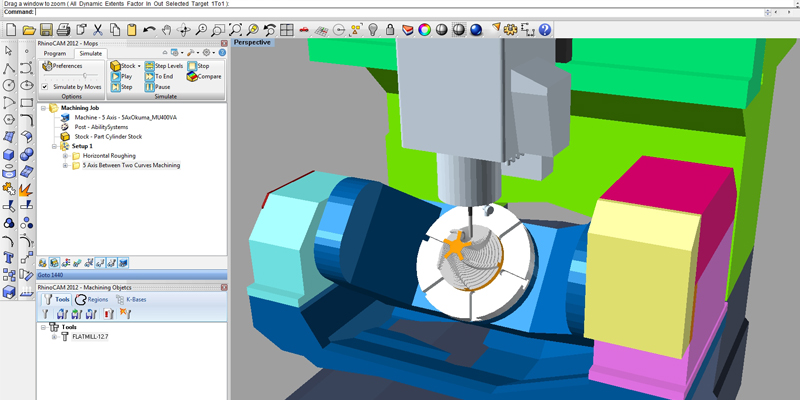Introduction:
In the dynamic world of CNC precision machining, Computer-Aided Manufacturing (CAM) stands as a linchpin, integral to the process's success. This comprehensive article explores the multifaceted role of CAM, highlighting how it propels efficiency, accuracy, and innovation in CNC machining. Our discussion is grounded in data and insights from leading industry sources, offering a detailed and trustworthy perspective on CAM's impact.

What is Computer-Aided Manufacturing (CAM)?
Computer-Aided Manufacturing (CAM) is a technology used in manufacturing and production processes to control machinery and manufacturing equipment using computer software and systems. CAM is a critical component of modern manufacturing and is often used in conjunction with Computer-Aided Design (CAD).
CNC machining in which steps are inseparable from computer-aided manufacturing (CAM)?
The typical steps involved in the CAM process in CNC machining are as follows:
Design Creation in CAD Software: The process begins with the creation of a 3D model or a 2D drawing of the desired part using CAD (Computer-Aided Design) software. This digital model includes all the necessary details and specifications for the part.
Importing CAD Model into CAM Software: The CAD model is then imported into CAM software. This software is specifically designed to translate the CAD model into a language (G-code or M-code) that CNC machines can understand and execute.
Selection of Tools and Materials: In the CAM system, the engineer or machinist selects the appropriate tools (like drills, mills, lathes) and materials needed for the job. This decision is based on the requirements of the part, such as its material, geometry, and tolerance levels.
Setting Machining Parameters: The CAM software is used to set various machining parameters, including cutting speed, feed rate, depth of cut, and tool path. These parameters are crucial for ensuring the quality of the final product and the efficiency of the machining process.
Tool Path Generation: The CAM software generates a tool path based on the geometry of the part. This tool path is a route that the cutting tool will follow during the machining process. The software calculates the most efficient path for reducing machining time and wear on the tool while ensuring accuracy.
Simulation of the Machining Process: CAM software often includes simulation capabilities, allowing the machinist to visualize the tool path and the machining process in a virtual environment. This step is vital for identifying and rectifying potential issues like collisions or inefficiencies before actual machining.
Generation of G-Code/M-Code: Once the tool paths are finalized and the process is simulated and validated, the CAM software generates the G-code or M-code. This code contains the detailed instructions that the CNC machine will follow.
Transferring Code to CNC Machine: The generated code is then transferred to the CNC machine. This can be done via direct connection, network, or removable media like a USB drive.
Machine Setup and Material Loading: The CNC machine is set up with the appropriate tools, and the material to be machined is loaded into the machine.

Machining Process: The CNC machine reads and executes the G-code or M-code, guiding the tools to shape the material into the final part as per the design.
Through these steps, the CAM process effectively translates a digital design into a physical part with high precision, using CNC machining technology.
Exploring the Indispensable Role of Computer-Aided Manufacturing (CAM)
1. The Heart of CNC Machining: CAM's Central Role:
CAM's importance in CNC machining lies in its ability to seamlessly convert CAD designs into executable machine instructions (G-code). This transition is critical for ensuring the digital blueprints are accurately rendered in the physical components. According to a study by the International Journal of Advanced Manufacturing Technology, CAM reduces errors by up to 50% compared to traditional manufacturing methods. It ensures a high level of precision and standardization, vital for industries demanding exacting standards, such as aerospace and medical technology.
2. Precision and Consistency: CAM's Hallmarks:
CAM's role in ensuring high precision and consistency in CNC machining is unparalleled. It enables machines to produce components with tolerances as tight as a few micrometers. A report by the National Institute of Standards and Technology underscores this, noting that CAM-driven CNC machinery consistently achieves precision levels that manual processes can't match. This precision is not just about accuracy; it's about repeatability, ensuring every part is identical to the last, a crucial factor in large-scale production.
3. Process Optimization: Beyond Simple Translation:
Beyond translating designs into machine language, CAM software is pivotal in optimizing the entire manufacturing process. It intelligently chooses tools, plans efficient cutting paths, and sets optimal machine parameters. This optimization isn't just theoretical; as highlighted in the Journal of Manufacturing Processes, companies using advanced CAM software have reported up to 30% reductions in material waste and 20% reductions in production time, marking significant cost and environmental benefits.
4. Enabling Complex and Innovative Designs:
CAM empowers manufacturers to create complex designs that would be unfeasible with manual machining. As per a study in the Journal of Machine Engineering, CAM's ability to handle intricate geometries has led to innovations in product design, particularly in sectors like automotive and consumer electronics, where complexity and aesthetic appeal are crucial.
5. Integration with Emerging Manufacturing Trends:
In the era of automation and Industry 4.0, CAM's significance is magnified. It acts as a bridge between digital systems such as ERP and MES, enhancing production efficiency and data analysis. A report by Deloitte on manufacturing trends indicates that CAM-integrated systems increase overall equipment effectiveness (OEE) by up to 20%, underscoring its role in modern manufacturing paradigms.
Conclusion:
CAM's role in CNC precision machining is multifaceted and indispensable. Its impact stretches from enhancing precision and efficiency to enabling complex designs and integration with modern manufacturing trends. As technology evolves, CAM's significance in the manufacturing sector is poised for even greater heights, marking it as a key player in the future of precision machining.
References:
“Computer-Aided Manufacturing (CAM) and Its Impact on CNC Machining,” National Institute of Standards and Technology.
“Enhancing Production Efficiency through CAM: A Study,” International Journal of Advanced Manufacturing Technology.
“CAM Optimization in CNC: A Route to Efficient Manufacturing,” Journal of Manufacturing Processes.
“Complex Geometries and CAM: Innovations in Design,” Journal of Machine Engineering.
“Industry 4.0 and CAM Integration: Increasing Productivity,” Deloitte Manufacturing Trends Report.